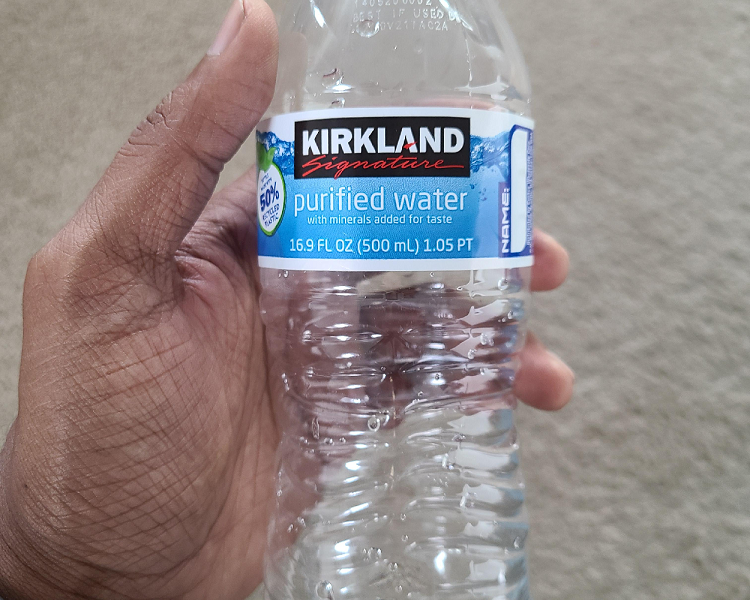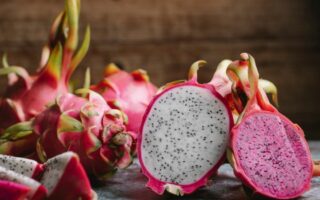When reaching for a bottle of water to quench our thirst or stay hydrated on the go, we often encounter various sizes, each measured in ounces. Understanding the ounces in a bottle of water is crucial to meet our hydration needs efficiently.
In this article, we will explore the common bottle sizes, factors influencing their choice, conversion equivalencies, and the impact of bottle size on sustainability.
Quick Answer – A standard water bottle typically refers to a single-serve size, and the 16.9-ounce bottle is a common choice. To find out how many 16.9 oz water bottles are in a gallon, we need to know that one gallon equals approximately 128 ounces
How Many Water Bottles Are in a Gallon?

To determine how many water bottles are in a gallon, we first need to know the volume of one gallon in ounces. One gallon is equivalent to 128 fluid ounces.
Now, we’ll find out how many 16.9-ounce water bottles make up a gallon:
Divide the total number of ounces in a gallon (128) by the size of each water bottle (16.9).
128 ounces ÷ 16.9 ounces/bottle ≈ 7.57 bottles
So, there are approximately 7.57 standard 16.9-ounce water bottles in one gallon.
It’s essential to note that the actual number may vary slightly depending on the specific water bottle size used and its rounding to two decimal places in this calculation. In practical terms, you can use eight 16.9-ounce water bottles as a practical estimate for a gallon when planning water consumption or when refilling bottles from a gallon-sized container.
Common Bottle Sizes and Ounces:
Different bottle sizes are available in the market, catering to various preferences and purposes.
8-ounce bottle:
The 8-ounce bottle is a popular choice for compact and lightweight hydration. It is often used for short outings, kids’ lunches, and events where quick hydration is required. Brands like Aquafina and Dasani offer this size. The advantage of an 8-ounce bottle lies in its portability and convenience, making it easy to fit in small bags or pockets.
However, its drawback is the limited water supply, which may not suffice for extended activities or intense physical workouts.
16-ounce bottle:
The 16-ounce bottle strikes a balance between portability and water volume. Widely available from brands like Nestlé Pure Life and Evian, it caters to various occasions and hydration needs. The 16-ounce bottle is suitable for short outings, workouts, and desk-side hydration at work.
Its larger capacity ensures longer-lasting hydration, but it may still prove insufficient for more extended activities or strenuous workouts.
20-ounce bottle:
The 20-ounce bottle is a popular choice for staying hydrated throughout the day. Brands like Smartwater and Fiji offer this size. It provides a substantial amount of water, making it suitable for moderate physical activities, outdoor adventures, and everyday hydration.
The 20-ounce bottle’s slightly larger size may be less convenient to carry, but it ensures fewer refills, making it an optimal choice for individuals with moderate hydration needs.
32-ounce bottle:
The 32-ounce bottle caters to individuals with higher hydration requirements or those engaged in prolonged physical activities. Brands like Gatorade and CamelBak offer this size. The 32-ounce bottle is commonly used by athletes, hikers, and individuals in hot climates.
Its larger capacity provides ample hydration, but its size may be less convenient for everyday use and portability.
Also Read – Who, What, When, Where, Why” in Spanish: Mastering the Art of Effective
Factors Affecting Bottle Size Choices:
Choosing the right bottle size involves considering various factors related to personal preferences and circumstances.
Portability and Convenience:
The size of the bottle directly affects its portability. For quick outings and easy carrying, smaller bottles like the 8-ounce or 16-ounce options are more practical.
On the other hand, larger bottles, such as the 20-ounce or 32-ounce, may be better suited for longer activities or when a refill is less accessible.
Hydration Needs:
Individual hydration needs vary based on factors like age, weight, physical activity, and climate. Understanding personal hydration requirements helps in selecting the appropriate bottle size. Athletes or individuals in hot climates might benefit from larger bottles, while those with moderate needs can opt for smaller sizes.
Sustainability Considerations:
Apart from personal preferences, the environmental impact should also be considered. Opting for reusable water bottles, regardless of size, reduces single-use plastic waste.
Additionally, some brands offer eco-friendly alternatives, such as bottles made from recycled materials or biodegradable options.
Conversion and Equivalents:
Converting bottle sizes from ounces to milliliters can be helpful, especially when traveling or using international measurements. Here are some common conversions:
Ounces to milliliters:
1 fluid ounce (oz) ≈ 29.57 milliliters (ml)
Comparing Bottles Across Sizes:
To have a better perspective, here are the conversions of common bottle sizes to liters and gallons:
1. 8 ounces ≈ 0.24 liters ≈ 0.06 gallons
2. 16 ounces ≈ 0.47 liters ≈ 0.13 gallons
3. 20 ounces ≈ 0.59 liters ≈ 0.16 gallons
4. 32 ounces ≈ 0.95 liters ≈ 0.25 gallons
Customization and Specialized Bottles:
Personalizing water bottles adds a touch of uniqueness and can help prevent mix-ups in group settings. Some brands offer the option to add labels, names, or custom designs to bottles.
Additionally, there are specialized bottles like infused water bottles, which allow users to add fruits or herbs for a refreshing taste, and sports water bottles designed with ergonomic features for easy drinking during physical activities.
Also Read – What to Do If You Eat Undercooked Potatoes: Risks, Remedies, and Prevention
Frequently Asked Questions:
The 16-ounce bottle is one of the most common sizes due to its balance between portability and hydration capacity.
Individual hydration needs vary, but a general guideline is to drink about eight 8-ounce glasses of water daily (64 ounces), known as the “8×8 rule.”
Yes, beyond the common sizes discussed, there are larger bottles for bulk storage and smaller bottles for specialized uses.
Many plastic water bottles are designed for single use but can be reused if cleaned properly. However, using reusable water bottles is a more sustainable and eco-friendly option
Conclusion:
Understanding the ounces in a bottle of water helps us make informed choices regarding hydration needs and environmental impact. Whether opting for a small and portable bottle or a larger one to cater to extended activities, staying hydrated is crucial for overall well-being.
By considering factors like portability, hydration needs, and sustainability, we can make better choices that benefit both ourselves and the planet.




